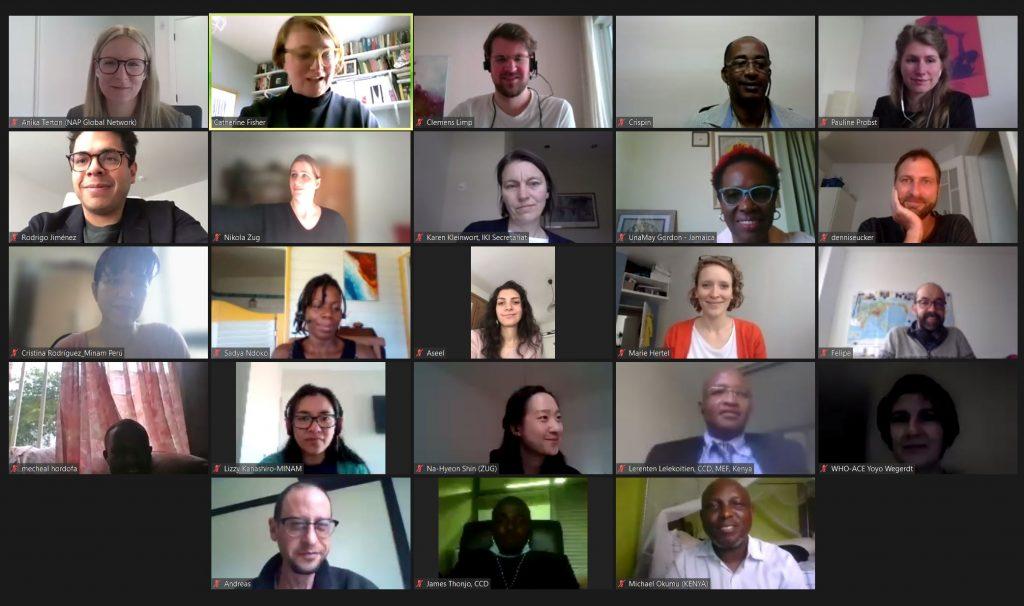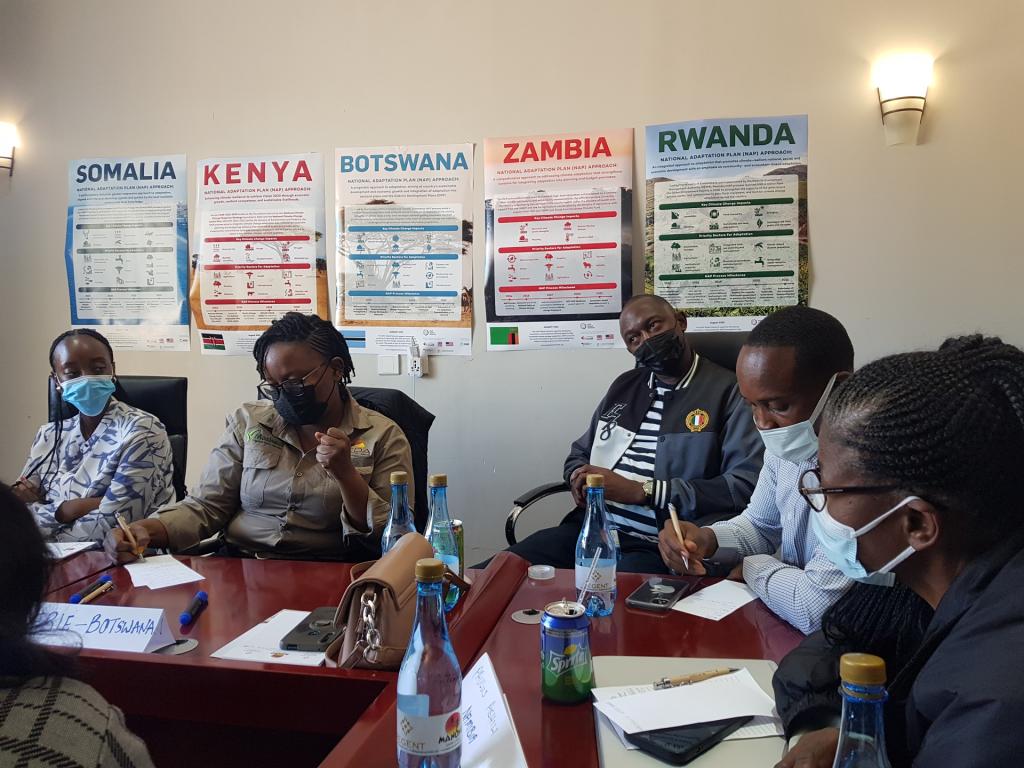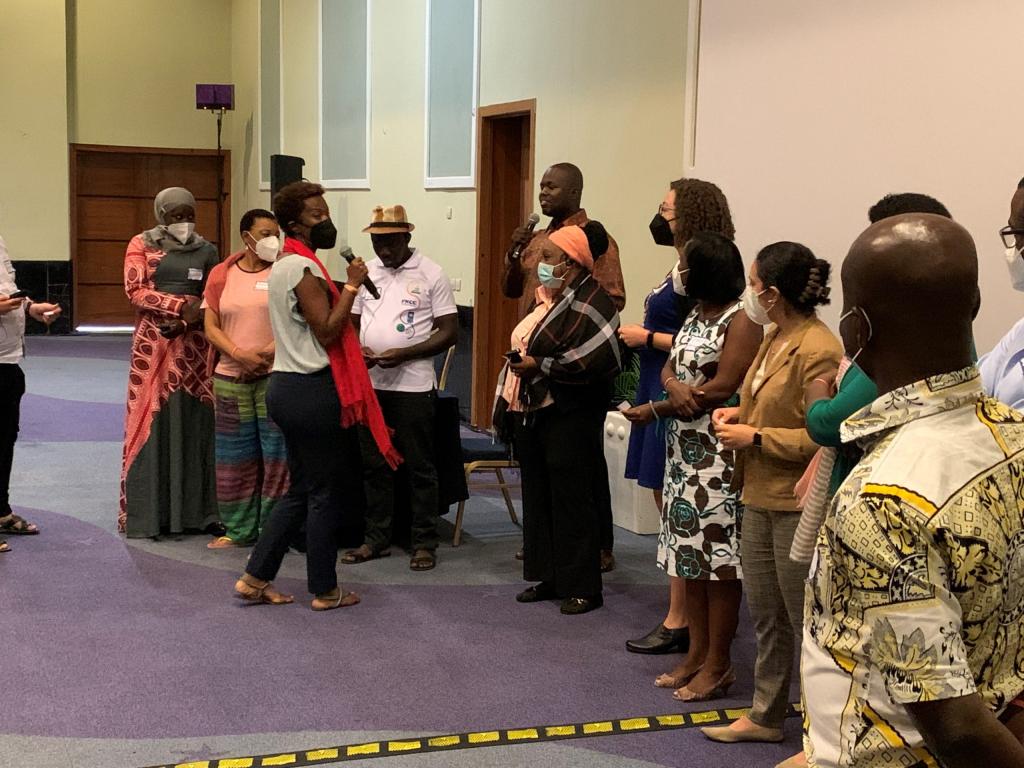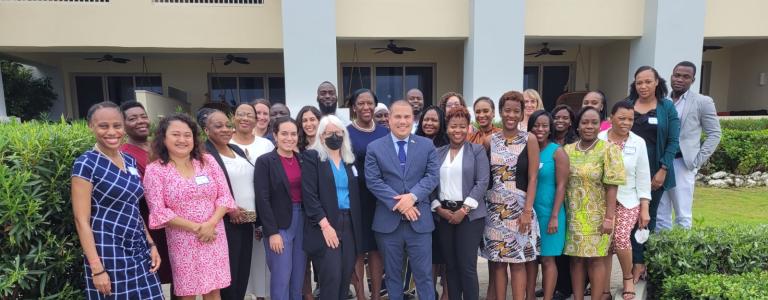What Is Next for South–South Peer Learning on Adaptation? Reflecting on peer learning in post-pandemic times
This article was originally published on the website of the National Adaptation Plan (NAP) Global Network, whose secretariat is hosted by IISD, and is republished here with permission.
The role of peer learning in supporting countries with their responses to the urgent and complex challenges of climate change is increasingly understood. But in 2020, the devastating COVID-19 pandemic put an abrupt halt to face-to-face learning events. In many cases, this forced convenors like the NAP Global Network to recreate learning experiences in virtual formats—often with mixed results.
After 2 years of virtual interactions, the lifting of travel restrictions offers the promise of returning to "normal." However, the experiences from different models of interaction during the pandemic, paired with growing concern about the carbon emissions related to international travel, is leading many to consider what role virtual peer learning should play in this "new normal."
The NAP Global Network is one of many organizations thinking strategically about the role of virtual peer learning in its work to support climate action. To help this strategy process, we were commissioned to review the NAP Global Network’s shift to virtual learning in the context of wider trends, drawing on the NAP Global Network community experiences, case studies, and our own practical experience.
In this blog, we share some emerging results from this review because we believe that a better understanding of how to translate in-person learning and exchange into equitable and impactful virtual formats is important for the collective global action on climate change.
What Makes Peer Learning Different?
For many people with Internet access, the pandemic saw day-to-day interactions shift suddenly online, from team meetings to birthday parties. The shift worked well for some interactions and proved a woeful second best for others. Similarly, some types of learning formats had an easier transition to virtual environments than others. Webinars, for example, often involving a presentation followed by a moderated question and answer session, proliferated. For peer learning, however, the transition was more complex.
To explore why, we need to consider the defining features of peer learning and why it is different from knowledge exchange and instruction. Our review defined peer learning as follows:
Peer learning occurs when two or more people learn with and from one another. This learning is reciprocal, intentional, and focused on issues, challenges, or a context that peers have in common. Peers are equal, as everyone has knowledge and experience for their peers to learn from.
In contrast to other forms of knowledge sharing, peer learning emphasizes the exchange of "tacit knowledge" among peers—that is, knowledge and insights based on people’s experiences and jobs. Two-way peer interaction helps bring tacit knowledge to light and make it more explicit through emergent, collective processes. This defining element of peer learning relies on trust and connection, which are notoriously difficult to establish and nurture in virtual settings.

Virtual peer learning is also complicated by the fact that participants are simultaneously "together" and "apart," with both contexts shaping their ability to engage. Virtual peer learning can struggle for sustained time and attention. This need to compete for attention is a backdrop for our findings, including consideration of the gender and social inclusion implications of the shift to virtual peer learning.
Taking Stock of Peer Learning in the NAP Global Network
South–South peer learning has always been a key pillar at the NAP Global Network in its efforts to advance national adaptation planning and action in developing countries. An independent evaluation found NAP Global Network's peer learning work is "a relevant and effective approach to supporting climate change adaptation efforts."

However, like many other climate and development initiatives, virtual convening was not a focus prior to the start of the COVID-19 pandemic. The two virtual Peer Learning Summits convened by the NAP Global Network did not fully meet with the success hoped.
Our research identified key differences that emerged in the transition from face-to-face to virtual learning:
- A tendency to collapse days of learning into a few short hours of virtual engagement, driven by time zone considerations and concerns about screen fatigue.
- A related shift toward “knowledge transfer” through technical presentations rather than relational and reflexive interactions, affecting the sense of connection between peers.
- A lack of gravitas and low expectations of virtual events by both participants and convenors. Compared to fly-in-fly-out events, they seem “less consequential” and more forgettable.
- A shift in the profile of participants; the two virtual events were less selective and less focused on country government representatives. Facilitating reciprocal learning with participants from diverse backgrounds with different motivations can be challenging, especially when many of them have no pre-existing relationships.
In short, design decisions in the shift to virtual served to limit meaningful exchange and relationship building between participants and did not create a context in which impactful peer learning could take place. Although we focused on NAP Global Network events, our review of the wider landscape suggested their experience was not unique.
How Can We Improve Virtual Peer Learning?
The headline lesson from our review is that, though challenging, virtual peer learning can work when it is sustained and builds on existing trust, collaboration, and joint enterprise. How might that be achieved?
Suggestion 1. Consider virtual peer learning within a broader learning strategy
For the NAP Global Network, this headline lesson underscores the importance of having an overarching peer learning strategy that clearly connects peer learning to the aims of the network and the priorities of its members. It requires seeing peer learning as a process and not an event, and investing in nurturing sustained relationships between participants. Involving funders in this process is important.
Suggestion 2. Build context-driven connection
Focus on fostering connections between peers at all stages of peer learning processes. When planning, this includes considering what connects participants, finding opportunities for co-production and shared purpose while clarifying expectations and building a sense of significance in advance. During processes, it involves facilitation that values relationship building and constantly stresses the significance of each participant’s contribution and dialogue over technical presentations.
Suggestion 3. Consider multiple contexts that shape the virtual peer learning experience
Participants have vastly different constraints and enablers related to their social identities (i.e., gender, race, ethnicity, etc.) and professional roles (e.g., responsibilities, organizational hierarchy). We found limited evidence of gender and social inclusion considerations beyond consideration of connectivity. We see this as an area for considerable exploration and engagement. Proactively seeking to understand and mitigate any negative impacts experienced due to participants’ gender and social differences will be key to achieving equitable peer learning processes, recognizing that these will be intersectional and highly context specific.
Suggestion 4. Track progress and impacts
Tracking progress of peer learning processes is important to sustain engagement by participants, as well as for learning and accountability purposes. The review suggests focusing on three lenses when tracking progress:
- The learning outcomes, if/how learning is applied, and what kind of change is generated as a result.
- The strength of the foundations for sustained learning and collaboration between stakeholders.
- The approach to virtual peer learning and whether it’s the right approach to achieve the intended impact, whether at operational or strategic levels.
Given the scarcity of existing data on equity and social inclusion considerations of peer learning, we suggest that data should be disaggregated where possible in order to understand whether different groups experience virtual peer learning differently and what that means for design and inclusion.

The return to in-person convening has led many to want to turn the page on virtual engagement. However, the reality of the climate crisis and the opportunities presented by 2 years of learning call for us to take a more balanced approach. We hope that this analysis and the path forward that it presents will create new opportunities for learning and engagement within the NAP Global Network and the climate change community more widely.
Learn more about how the NAP Global Network facilitates South-South peer learning and exchange.
You might also be interested in
Learning From Gender-Responsive National Adaptation Plan Processes: Insights from countries to inform the review of the UNFCCC Gender Action Plan
Based on the priority actions of 10 African and Caribbean countries for integrating gender equality in their National Adaptation Plan (NAP) processes, we identified recommendations for effectively advancing the Gender Action Plan (GAP) under the United Nations Framework Convention on Climate Change (UNFCCC).
What Does an Inclusive Global Stocktake Look Like for Civil Society?
The inaugural Global Stocktake will conclude at COP 28 in 2023. With the process well underway, the current and upcoming phases of the Global Stocktake must be open and inclusive in order to succeed.
Putting Equity at the Heart of the Global Stocktake
Capturing the world's collective progress towards achieving the Paris Agreement goals requires a look at who is being left behind and what we must do to create an equitable, climate-resilient future for all.
How to Raise the GlaSS on the Global Goal on Adaptation at COP 27: Four foundations to build upon
Over the past year, the Global Goal on Adaptation (GGA) has gained attention from country policy-makers, practitioners, and academics trying to solve this puzzle: What relevant and appropriate global goals on adaptation should the Paris Agreement incorporate?
